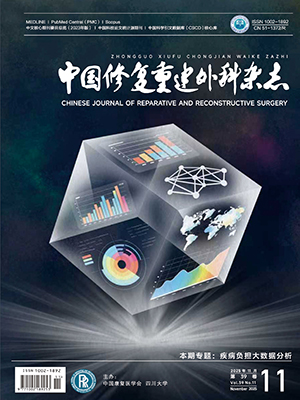Objective To explore the effects of various kinds of internal fixations on unstable intertrochanteric femoral fractures. Methods From January 2000 to December 2004,88 cases of unstable intertrochanteric femoral fractures were treated. There were 52 males and 36 females (aged 19-86 years). Twenty-two cases were caused by fall from height, 36 by motor vehicle accident and 20 by fall and 10 by tumble. They were divided into 4 groups according to 4 kinds of internal fixations: dynamic hip screw(DHS,group A, n=42), anatomical proximal femur bone plate (group B, n=23), proximal femoral nail(PFN,group C, n=8)and dynamic condylar screw (DCS, group D, n=15). According to the modified Evan’s classification, fractures were all unstable type and were classified as follow types: group A (15 type Ⅲ, 8 type Ⅳ and 19 type Ⅴ); group B (12 type Ⅲ, 5 type Ⅳ and 6 type Ⅴ); group C (3 type Ⅲ,2 type Ⅳ and 3 type Ⅴ); and group D (10 type Ⅲ,3 type Ⅳ and 2 type Ⅴ). The data of operative time, intra-operative blood loss, intraoperative complications, fluoroscopy exposures, clinical healing time of fracture, post-operative restored function and postoperative complications were recorded and analyzed statistically using the SPSS 12.0 software package.Results All patients were followed up for 12-48 month (18 months on average). All patients achieved clinical healing. Coxa varus occurred in 3 cases of group A, in 1 case ofgroup C and in 3 cases of group D . The differences were of no statistical significance in operative time and postoperative complications between 4 groups (P>0.05). The difference was of statistical significance in the blood loss between groups A,B and groups C,D (P<0.05) but no statistical significance between group C and group D (P>0.05). The difference was of statistical significance in the fluoroscopy exposures, clinical healing time of fracture and postoperative complications between group B and the other groups (P<0.05). The difference was of statistical significance in the postoperative restored functions between group D and theother groups (P<0.05). Conclusion The anatomical proximal femur bone plate is a useful device in the treatment of unstable intertrochanteric femoral fracture. The operative manipulation is simple and the hip functions recover well.
Citation: HU Weiguo,LUO Yongxiang,FANG huang,et al.. COMPARISON OF VARIOUS KINDS OF INTERNAL FIXATIONS IN UNSTABLE INTERTROCHANTERIC FEMORAL FRACTURE. Chinese Journal of Reparative and Reconstructive Surgery, 2006, 20(7): 690-694. doi: Copy
Copyright © the editorial department of Chinese Journal of Reparative and Reconstructive Surgery of West China Medical Publisher. All rights reserved




